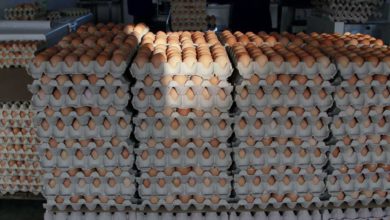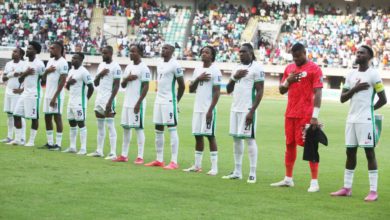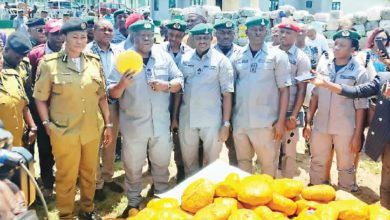
An attack has killed up to 40 migrants at a detention centre on the outskirts of the Libyan capital Tripoli, government officials say.
Some 80 people were injured at the centre, which the UN-backed government says was hit by an air strike.
Anti-government forces led by warlord Gen Khalifa Haftar have accused government forces of bombarding it.
Most of the dead are believed to be Africans, attempting to reach Europe on clandestine sea crossings from Libya.
Thousands of migrants are stopped and held in government-run detention centres.
The country has been torn by violence and division since long-time ruler Muammar Gaddafi was deposed and killed in 2011.
What do we know about the attack?
Some 120 migrants were inside a hangar at the Tajoura Detention Centre which took a direct hit on Tuesday evening, emergency services spokesman Osama Ali told AFP news agency.
Tajoura is believed to house some 600 migrants.
Women and children were among those hit, Guma El-Gamaty, a member of the UN-backed political dialogue group, told BBC World Service.
An official in the Libyan health ministry, Doctor Khalid Bin Attia, described the carnage for the BBC after attending the scene:
“People were everywhere, the camp was destroyed, people are crying here, there is psychological trauma, the lights cut off.
“We couldn’t see the area very clear but just when the ambulance came, it was horrible, blood is everywhere, somebody’s guts in pieces.”
Who is to blame?
The UN-backed Government of National Accord (GNA), led by Prime Minister Fayez al-Sarraj, accused the self-styled Libyan National Army (LNA) of carrying out an air strike on the centre.
The “heinous crime” was “premeditated” and “precise”, it said.
The LNA – led by Gen Haftar – was fighting government forces in the area where the strike happened.
It had announced on Monday that it would start heavy air strikes on targets in Tripoli after “traditional means” of war had been exhausted.
The LNA said its warplanes had bombed a pro-government camp near the centre and pro-government forces had fired shells in response, hitting the migrant centre by accident.
A spokesman for the UN refugee agency, Charlie Yaxley, said it could not confirm who was behind the attack on the centre, Reuters news agency reports.
Why is there war in Libya?
No authority has full control over Libya and the country is extremely unstable, torn between several political and military factions, the two most important of which are led by Prime Minister Sarraj and Gen Haftar.
Gen Haftar started an offensive against the government in April.
The general has been active in Libyan politics for more than four decades and was one of Gadaffi’s close allies until a dispute in the late 1980s forced him to live in exile in the US.
After returning to Libya when the uprising began in 2011, he built up a power base in the east and has won some support from France, Egypt and the UAE.
Libyans have mixed feelings towards him due to his past association with Gadaffi and US connections, but do credit him for driving Islamist militants out of much of the city of Benghazi and its surroundings.
How vulnerable are migrants in Libya?
People-smuggling gangs have flourished in Libya’s political chaos, charging desperate migrants from sub-Saharan Africa thousands of dollars per head.
Human rights groups have highlighted the poor conditions at the detention centres where many migrants end up as the EU works with the Libyan coastguard to intercept migrant boats.
Leonard Doyle, spokesperson for the International Organization for Migration in Geneva, said migrants were not treated with consideration when it came to housing them.
“This detention centre is right beside a militia workshop that’s been targeted in the past and it’s been hit by shrapnel,” he said.
“Migrants who are trying to get to Europe get picked up typically by the Libyan coastguard. They’re brought back to land and then they’re brought usually by bus to any of up to 60 detention centres around the city. It’s really not a good situation.”



